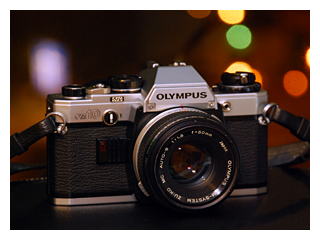Olympus bumped into my life a few times in significant moments: The very first gift I received from my girlfriend (now my wife) was an Olympus Stylus, and a few years ago I even had the opportunity to work with Olympus Hong Kong for their trade luncheon announcing their new lineup of digital cameras.
At present I own a Trip35, a PEN EE-2 and an OM10. The OM10 is a recent acquisition driven by the advertisement on OM-D, their premium DSLR. It sounds like a joke that they advertised heavily for their digital cameras and turned out I was seduced to buy a used, 30-year-old analogue one.
OM10 looks cool and it’s a very user-friendly camera. User friendly means it prevents the users to make “too-wrong” shooting decisions. It adopts aperture-priority mode which let you have some freedom in manipulating light and depth of field, in a reasonable range, and that’s all. A natural-born OM10 won’t let you play around shutter speed like a full manual SLR – unless you plug in a sold-separately manual shutter dial.
OM10 was a member of the Olympus OM family in those days. They utilized a proprietary architecture called OM System. Zuiko lenses for OM System in those days were highly acclaimed for their great performance and optical characteristics. The aperture-preview button on the barrel became a signature design for OM system too. In the digital world nowadays, Olympus cameras and Zuiko lenses are still making a handsome couple which means quality and reliability.
I owned a standard 50mm f/1.8 multi-coated kit lens as well as a 75-150mm f/4 zoom lens for my camera.
The following album was taken with my OM10:

 Lok Wo Sha
Lok Wo Sha